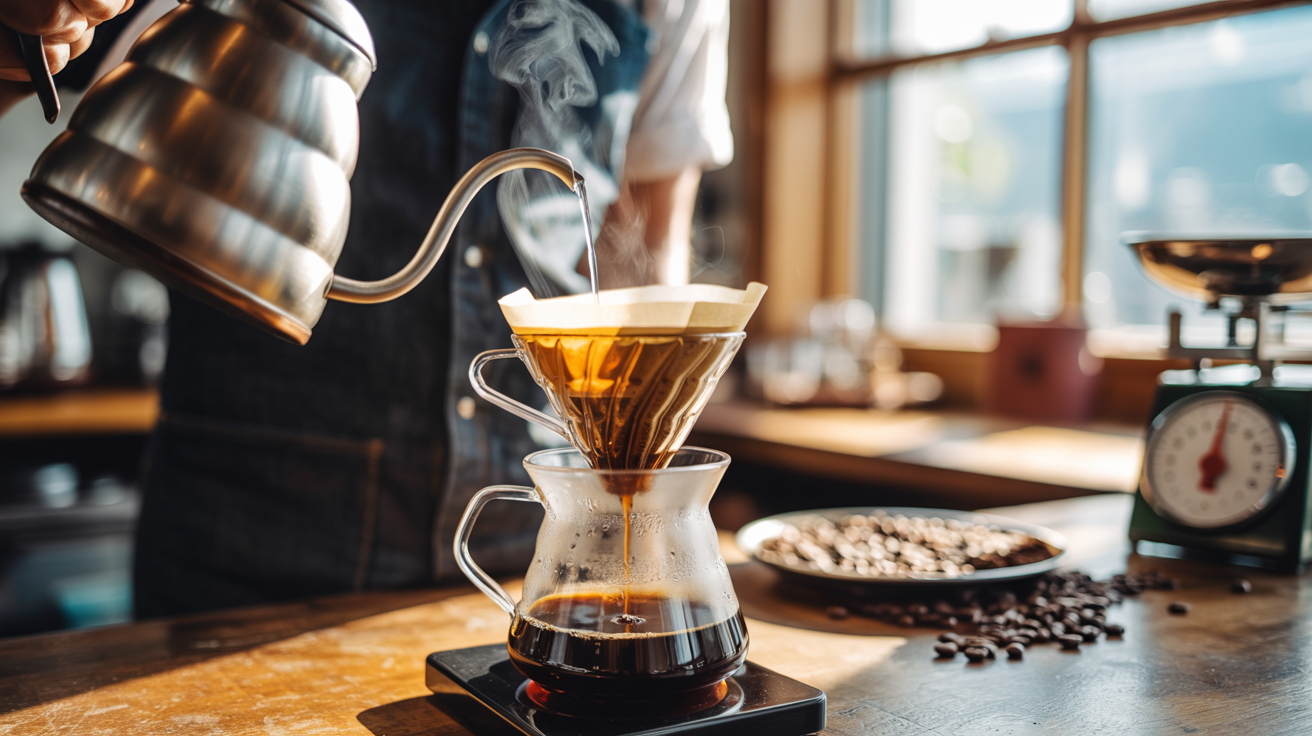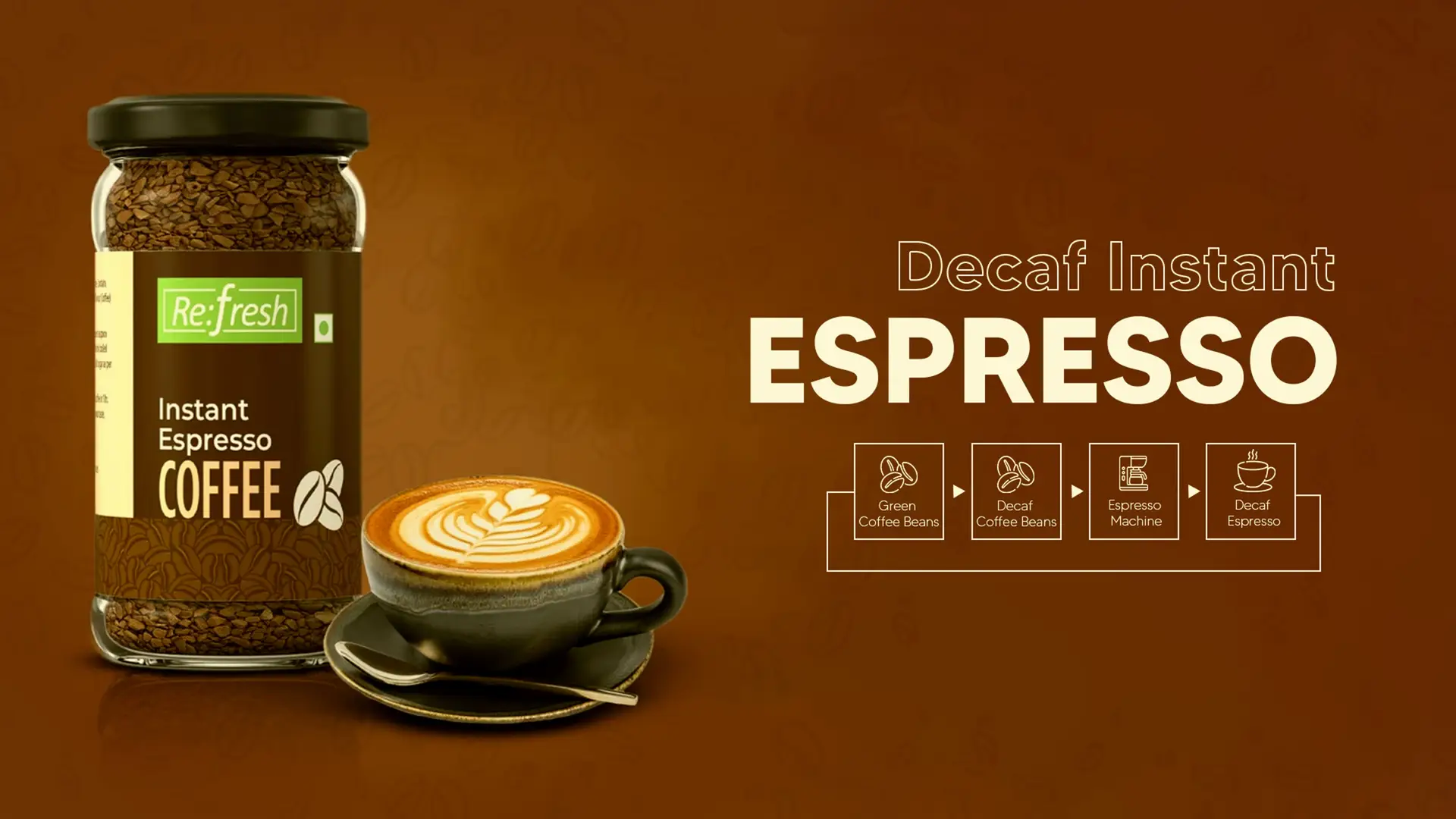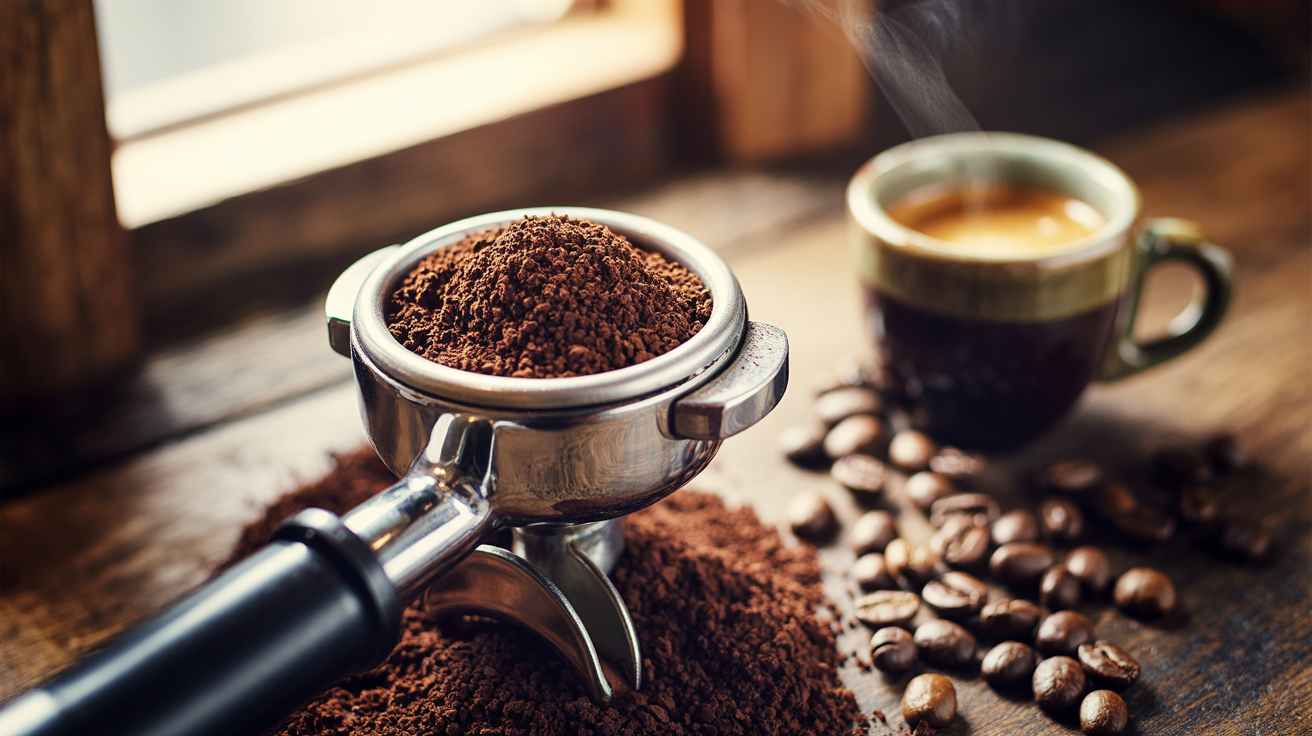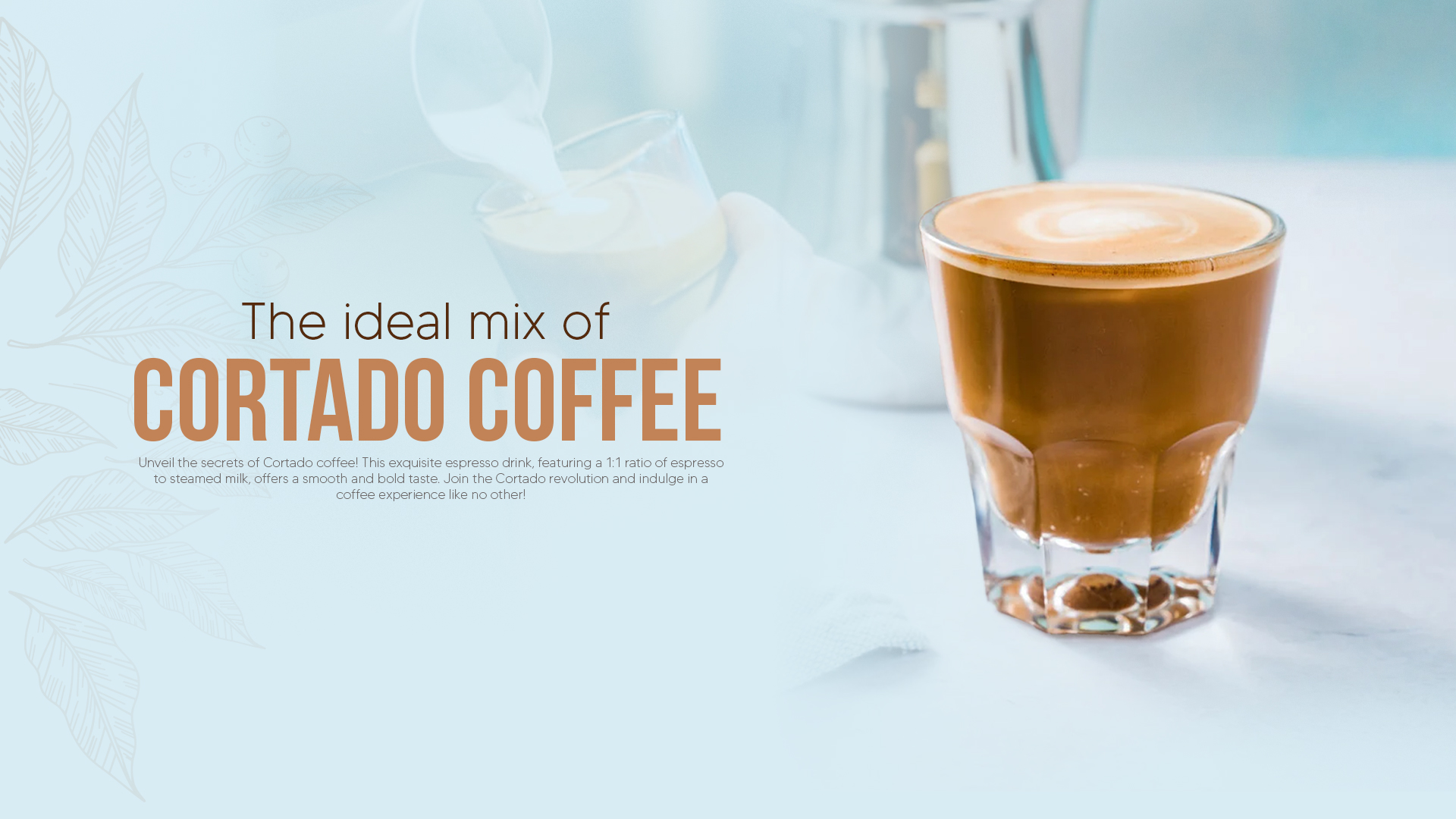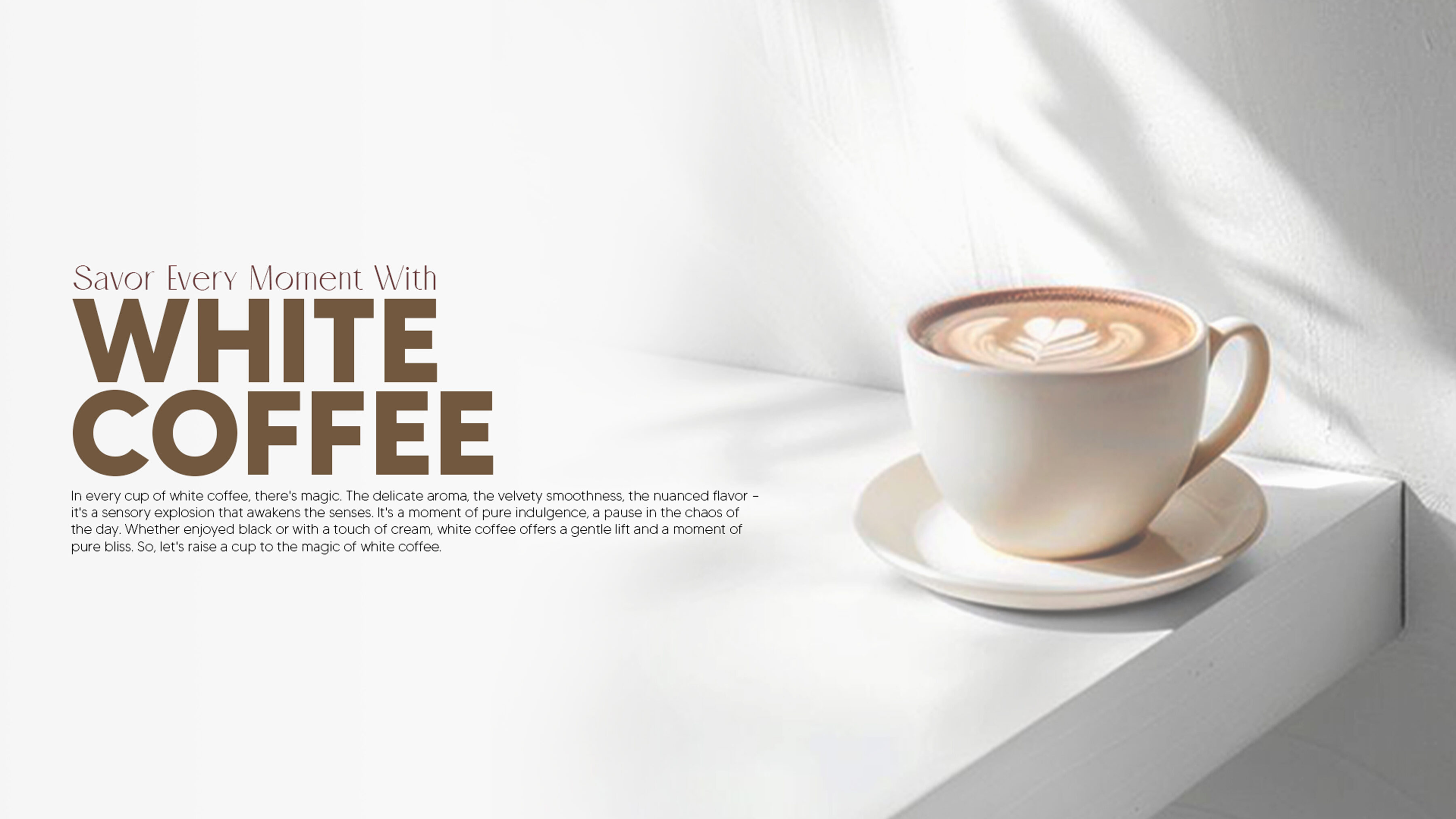Pour Over Coffee: How to Brew the Perfect Cup Every Time Pour Over Coffee: How to Brew the Perfect Cup...
Read MoreColada Coffee – Cuban Tradition in a Cup | How to Make It Right

Colada Coffee – Cuban Tradition in a Cup | How to Make It Right

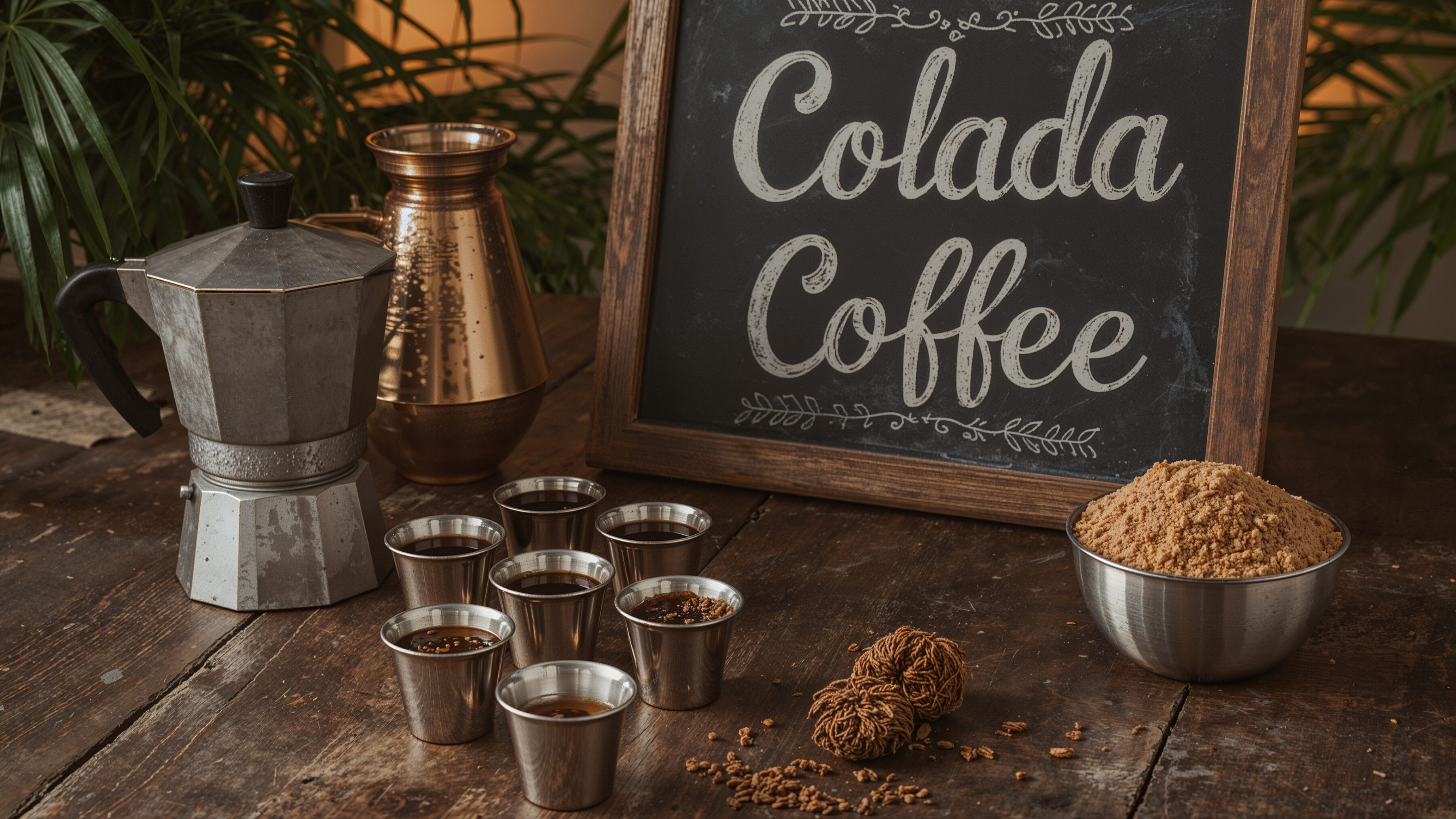
What Is Colada Coffee?
Brief history of Colada coffee in Cuban culture
Colada coffee is a fixture of Cuban culture, traceable to the early years of the 20th century when espresso machines first arrived in Havana. It became more than a morning ritual, becoming a vessel for conversation and community. A big cup and tiny demitasses for sharing is the traditional way to serve the Colada, strong and sweet. That imaginative approach is a model of the kind of coming together, of gathering that Cuba has long emphasized as a host. At work or in the neighborhood, sharing a Colada begets fellowship. In that tradition, which Miami helped to invent when it became home to Cuban immigrants and their more or less juiceless oranges (Born from Cuban resilience in Miami, the Colada became more than coffee it became community.), the refreshment that’s surpassed cultural phenomenon to border on caffeine delivery system.
How it differs from regular espresso
Cafe Cubano is different from standard espresso both in strength and flavor. Although they both have similar brewing techniques, Cuban coffee differentiates with its unique “Espuma,” or whipped sugar foam made by beating the first few drops of Espuma with sugar. This forms a dreamy, caramel-like top layer that is sweet but intense. Espresso, when unadulterated, is not usually sweetened, simply presented in its purest bean form. The Cuban coffee, on the other hand, combines strength and bold sweetness. It isn’t just about taste. It’s about sharing. It is frequently served in small cups for a crowd, turning coffee into a communal ritual, not merely a solo pick-me-up.
The Cuban Legacy: Experience Behind Colada Coffee
Personal or historical anecdotes about Cuban coffee gatherings
In Cuban neighborhoods, Colada coffee is more than just an energy boost. And a ritual of daily assembly. Imagine your neighbor knocking with a Styrofoam cup and small plastic shots. It’s the Colada, meant to be shared. Abuelos exchange tales children chase up and down the street, and the scent bridges generations. Historically, during challenging times in Cuba and Miami alike, Colada became a symbol of unity, cheap, potent, and consistent enough to go around. These moments built community. The experience behind Colada-coffee isn’t written in manuals; it’s lived, shared, and passed down like family recipes. That’s the Cuban legacy in every pour.
Local customs around sharing Colada in Miami and Havana
In Miami and Havana alike, sharing coffee is a treasured ritual steeped in hospitality and community. In Miami, office workers often gather for Colada breaks, passing tiny plastic cups around and sipping the sweet coffee decanted into them with a grin. It’s not just coffee. It’s a connection. In Havana, residents converge in corner cafes or in their own kitchens, pouring short, strong measures for neighbors and friends without a second thought. Turning down a cup can even be considered rude. These practices speak to an underlying cultural value: coffee is something to be shared. On busy Miami streets or down crowded Havana alleys, this tradition makes the act of having a drink something simple, a daily collective ritual.
How to Brew the Perfect Colada Coffee at Home
Ingredients & tools needed
To make good Colada coffee at home, some essentials are necessary. Begin with finely ground Cuban espresso-style coffee, such as Cafe Bustelo or Pilon. You’ll also need granulated sugar when you whip that eponymous Espuma. For tools, you can use a Moka pot (that’s the old-school way, but any stovetop espresso pot will work), and a splash guard is recommended. A metal spoon and a sturdy, easy-to-grip cup for whipping sugar are also important. No fancy devices, just strong coffee, sugar, and fire. Some people use a Colada-coffee machine for convenience, but the old-school way puts you in the driver’s seat (and feels more authentic). Modest equipment, full flavor, genuine tradition.
Step-by-step brewing (Moka pot or espresso machine)
How to make Colada Coffee with a Moka pot – Fill the bottom half with water up to the valve to prepare Colada coffee with a Moka pot. Add finely ground Cuban coffee to the basket of the maker, and do not tamp. Assemble the pot and place it on medium heat. As it brews, pour the first few drops into a cup with 2–3 teaspoons of sugar. Stir vigorously to create the signature Espuma. Once the pot finishes brewing, pour the rest over the Espuma and mix. For espresso machines, the process is similar, just faster. Either way, the key is whipping the first drops with sugar. That’s pure Colada magic.
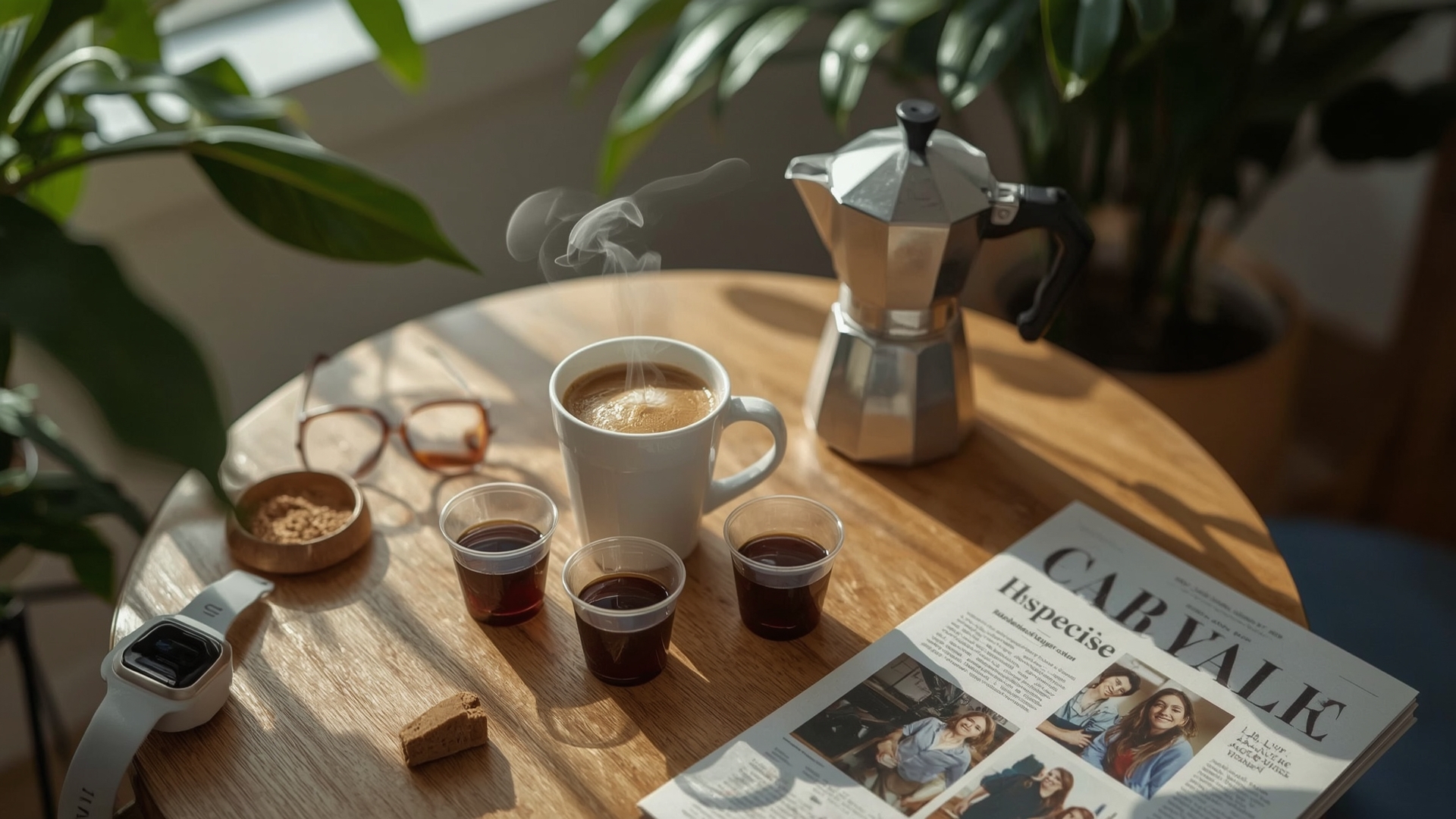
Using a Colada Coffee Machine: What You Need to Know
What makes a machine suitable for brewing Colada
When using a Colada coffee machine, focus on pressure, heat consistency, and brew strength. A suitable machine must deliver at least 9 bars of pressure to mimic traditional stovetop intensity. It should support finely ground Cuban espresso beans and allow for manual control or pre-infusion. Look for models with steam wands or crema-enhancing features, which help build Colada’s iconic Espuma. The ability to brew small, strong shots quickly is key. Machines like the Breville Bambino or Delonghi Dedica are popular picks. Automatic drip brewers won’t cut it. Colada-coffee needs espresso-style force and sweetness. Precision and power define the right machine.
Top machine features to look for (expert recommendation)
What To Consider When Looking For A Cuban-Style Coffee Machine The aim is to pick a machine that will emphasize flavors, pressure, and consistency. A powerful 15–20 bar pump property maintains ideal flavor extraction from the coffee. Also, seek temperature control to craft optimal heat stability for a rich and tasty crema! Two spouts are a plus if you’re splitting shots. A stainless steel boiler is more durable and heats up faster. Grinders with fine settings built-in control strength. Easy-to-clean parts? Non-negotiable for daily use. Some baristas suggest that having an option for the machine to pre-infuse with water before brewing helps give the resulting drinks more depth of flavor. In sum, Accuracy, sturdiness, and control are what matter most. The right machine will bring the tradition home strong, fast, and with all the bold character you could ever want.
Manual vs. automatic brewing – what gives better results?
Manual brewing allows for better control over each variable grind size, water temperature, and bloom time, which results in a more individualized, nuanced flavor. Automatic brewing does provide ease and consistency, especially on hectic mornings or in a commercial environment. But if we’re discussing flavor depth and extraction precision, manual processes like pour-over or French press often win. They allow you to dial in the brew exactly to your liking. Yet, the best automatic machines are catching up quickly. Better you get results whether you do it manually or automatically comes down to your skill, your time, and your taste preference. Those who love coffee and are in pursuit of perfection often prefer to brew manually.
Colada Coffee vs Other Cuban Coffees
Quick comparison table of Cuban coffee types
Here’s a rundown of Cuban coffee options: Colada: A bold brew with sugar that’s meant for sharing, served in a large cup with small, demitasse-size cups. Cafecito is a jolt of strong coffee whipped with sugar into a creamy, luxurious foam. Cortadito: A mix of espresso and steamed milk that is both sweet and strong. In the realm of other Cuban coffees, Colada is the people’s brew. It’s more potent than a Cortadito, more communal than a Cafecito. All have their place, but Colada-coffee was built for social occasions. This blend is the essence of Cuban coffee – strong, sweet, and intended to be shared.
When to drink what (based on tradition & caffeine strength)
A Cafecito, a strong and sweet espresso shot that provides a jolt of caffeine, is what Cubans have traditionally started their day with. Many moves on to a Cortadito by mid-morning, which tones down the espresso with steamed milk, providing for a smooth and gentle lifting of your spirit that is. Afternoon or post-lunch? That’s where the Colada comes in, a single drink big enough to share with friends, both a spirit-lifting social ritual and an energy boost. Each has its time: Cafecito for a jolt, Cortadito for equilibrium, Colada for community. It’s a decision made according to caffeine strength and cultural timing. In Cuban tradition, it’s not arbitrary what you drink or when you drink it: It’s embedded in daily rhythm and atmospherics.
How flavor, preparation, and serving styles vary
The flavor, the preparation, and, of course, the way it is served are all very different according to the ‘style’ of Cuban coffee. Cafecito is ultra-sweet whipped sugar foam that comes in a small cup for a quick hit. And cortadito, a mix of bitter and cream from warm milk cut with espresso, is made for sipping. The Colada, while bold, is served in several small cups and passed, making it deeply communal. The flavor profiles of each type of coffee differ depending on how it’s brewed and served. More concentrated. Still traditionally made in a stovetop Moka pot, it adds body and richness. The style of serving coffee is really beyond convenience, said to reflect Cuban warmth if not Cuban hospitality, and in addition, you might as well bow to the symbolism of coffee in the culture.
Trustworthy Colada Coffee Brands & Beans to Try
Top-rated Cuban coffee brands (based on experience or research)
A few of the best Cuban coffee brands feature stand-out bold flavors that are great for making traditional Colada coffee. What makes Cafe Bustelo so special: It is a boldly dark roast, and it’s everywhere. Pilon, with their smooth, sweet-flavored profile, is ideal for espresso-like type drinks. For a truly classic flavor, La Llave is a classic go-to and is often lauded for its rich aroma and thick crema. Mayorga Organics combines ethical sourcing with a rich, Cuban-style roast perfect for the conscious consumer. These reliable Colada-coffee brands have been tried and tested for generations and come with rave reviews. Regardless of whether you’re making coffee for one or many, such beans have the unmistakable strength and character only the Cubans bring.
Bean origin, roast type, and their effect on flavor
The flavor profile of Cuban coffee is distinctly attributable to the origin of the beans and their roasting process. Beans from Brazilian or Colombian sources in Latin America, say, are the kind of thing you’d expect: rich and chocolatey, low in acidity. Cuban-style coffee is dominated by dark roasts, and you get this deep, smoky flavor with a strong punch when it comes to the taste. The darker, the better, as far as less acidity is concerned when it comes to sweetened espresso drinks like Cafecito or Cortadito. Lighter roasts? It’s not a Cuban fave. Roast level: Brings out crema, balances sugar, and gives more aroma. For an incredibly authentic Cuban flavor, use good beans with a strong, full-bodied roast. It is the basis of the flavor in each cup.

Health, Caffeine, and Colada: Is It Too Strong?
Caffeine content comparison with espresso & drip
Colada coffee isn’t made for sucking up but is flavorful enough to get you through. When it comes to caffeine levels, it delivers more milligrams per ounce than your average cup of drip. In some Cuban communities, they drink the same potency of coffee as the conventional espresso shot, but it is regularly drunk in much larger quantities with friends and relatives, leading to more overall caffeine consumption. Drink the entire thing, and a whole serving of Colada will give you 300-400mg of caffeine , no prob. That’s a bit much for most people to need all at once. In health, as in most other things, moderation is good. If sensitive to caffeine, go easy. Colada coffee has a kick to it and life to it, but it’s not for the weak of heart, the weak of soul, or the sleepy of sleep. Sip smart, share often.
Benefits and risks of frequent consumption
There are upsides and downsides to guzzling Cuban coffee. The good news is it makes you more alert and in a better mood and contains minerals that are involved in proper bodily functions. Its bracing taste and jolt of wake-up juice are staples of many people’s routines. But the downside? Too much caffeine can rob you of sleep, incite anxiety, and leave you feeling jumpy, especially if you’re sensitive to the stuff. Factor in the sugar that’s usually included with it, and there’s an impact on blood sugar levels to consider. Moderation is key. Absorb the culture and vibe it provides, but then offset with hydration, rest, and boundaries to play it safe.
Colada coffee is much more than a drink. It’s a cultural heartbeat. It symbolizes the community, the hospitality, and a shared moment in Cuban life. It’s served in a single large cup with smaller ones for sharing, and it’s all about the connection, not the separation. Everything, from the aroma to the sugary crema, is a statement of tradition and pride. It’s strong, sweet as life, and social, a lot like the people who brew it. This is no ordinary coffee break. It’s a ritual, a legacy, a story told over sips. That’s why Colada-coffee is more than caffeine. Its culture poured hot and passed with heart, one shot at a time.
What is Colada Coffee?
Colada coffee is a sweet, super-strong Cuban espresso served in a larger glass, with small demitasse cups so friends share. It is cultural wisdom in Cuban communities and will most commonly be brewed in a Moka pot and recognized by its sugar foam (Espuma) characteristic.
How to make Colada Coffee?
Brew espresso in a Moka pot. Whip the first few drops with sugar to make Espuma, and mix the rest of the brew. Serve in tiny shared cups, à la Cuba. Colada is a sweetened espresso that’s meant for sharing.
What is the difference between Colada Coffee and Cortado?
Espresso mixed with warm milk is called a cortado, which is usually unsweetened and served on its own.
Is Colada just espresso?
No, sweetened espresso with frothy sugar foam is Colada. It is also served in a set, like several small shots of it, whereas espresso is not sweetened and is served alone.
How much caffeine is in a Colada Coffee?
For per shot and degree of brew, there are between 300–450mg of caffeine in a to-go Colada. It’s often shared to rationalize the high caffeine content.
Popular Posts
Instant Espresso: Enjoy Rich Espresso Anytime, Anywhere
The Ultimate Guide to Espresso Beans: What You Need to Know The Ultimate Guide to Espresso Beans: What You Need...
Read MoreEspresso Beans vs Coffee Beans: Key Differences You Should Know
Espresso Beans vs Coffee Beans – Which One Brews Best? Espresso Beans vs Coffee Beans – Which One Brews Best?...
Read MoreThe Ultimate Guide to Perfect Espresso Grounds
The Ultimate Guide to Perfect Espresso Grounds The Ultimate Guide to Perfect Espresso Grounds Introduction: Mastering Espresso Grounds for Great...
Read MoreCortado Coffee: A Perfect Balance of Espresso and Milk
Cortado Coffee: A Perfect Harmony of Espresso and Milk! Cortado Coffee: A Perfect Harmony of Espresso and Milk! Introduction A...
Read MoreMacchiato vs Other Coffees: Barista-Backed Comparisons
Macchiato vs Other Coffees: Barista-Backed Comparisons Macchiato vs Other Coffees: Barista-Backed Comparisons 1. Introduction: Exploring the World of Coffee Drinks...
Read More
What Is Colada Coffee?
Brief history of Colada coffee in Cuban culture
Colada coffee is a fixture of Cuban culture, traceable to the early years of the 20th century when espresso machines first arrived in Havana. It became more than a morning ritual, becoming a vessel for conversation and community. A big cup and tiny demitasses for sharing is the traditional way to serve the Colada, strong and sweet. That imaginative approach is a model of the kind of coming together, of gathering that Cuba has long emphasized as a host. At work or in the neighborhood, sharing a Colada begets fellowship. In that tradition, which Miami helped to invent when it became home to Cuban immigrants and their more or less juiceless oranges (Born from Cuban resilience in Miami, the Colada became more than coffee it became community.), the refreshment that’s surpassed cultural phenomenon to border on caffeine delivery system.
How it differs from regular espresso
Cafe Cubano is different from standard espresso both in strength and flavor. Although they both have similar brewing techniques, Cuban coffee differentiates with its unique “Espuma,” or whipped sugar foam made by beating the first few drops of Espuma with sugar. This forms a dreamy, caramel-like top layer that is sweet but intense. Espresso, when unadulterated, is not usually sweetened, simply presented in its purest bean form. The Cuban coffee, on the other hand, combines strength and bold sweetness. It isn’t just about taste. It’s about sharing. It is frequently served in small cups for a crowd, turning coffee into a communal ritual, not merely a solo pick-me-up.
The Cuban Legacy: Experience Behind Colada Coffee
Personal or historical anecdotes about Cuban coffee gatherings
In Cuban neighborhoods, Colada coffee is more than just an energy boost. And a ritual of daily assembly. Imagine your neighbor knocking with a Styrofoam cup and small plastic shots. It’s the Colada, meant to be shared. Abuelos exchange tales children chase up and down the street, and the scent bridges generations. Historically, during challenging times in Cuba and Miami alike, Colada became a symbol of unity, cheap, potent, and consistent enough to go around. These moments built community. The experience behind Colada-coffee isn’t written in manuals; it’s lived, shared, and passed down like family recipes. That’s the Cuban legacy in every pour.
Local customs around sharing Colada in Miami and Havana
In Miami and Havana alike, sharing coffee is a treasured ritual steeped in hospitality and community. In Miami, office workers often gather for Colada breaks, passing tiny plastic cups around and sipping the sweet coffee decanted into them with a grin. It’s not just coffee. It’s a connection. In Havana, residents converge in corner cafes or in their own kitchens, pouring short, strong measures for neighbors and friends without a second thought. Turning down a cup can even be considered rude. These practices speak to an underlying cultural value: coffee is something to be shared. On busy Miami streets or down crowded Havana alleys, this tradition makes the act of having a drink something simple, a daily collective ritual.
How to Brew the Perfect Colada Coffee at Home
Ingredients & tools needed
To make good Colada coffee at home, some essentials are necessary. Begin with finely ground Cuban espresso-style coffee, such as Cafe Bustelo or Pilon. You’ll also need granulated sugar when you whip that eponymous Espuma. For tools, you can use a Moka pot (that’s the old-school way, but any stovetop espresso pot will work), and a splash guard is recommended. A metal spoon and a sturdy, easy-to-grip cup for whipping sugar are also important. No fancy devices, just strong coffee, sugar, and fire. Some people use a Colada-coffee machine for convenience, but the old-school way puts you in the driver’s seat (and feels more authentic). Modest equipment, full flavor, genuine tradition.
Step-by-step brewing (Moka pot or espresso machine)
How to make Colada Coffee with a Moka pot – Fill the bottom half with water up to the valve to prepare Colada coffee with a Moka pot. Add finely ground Cuban coffee to the basket of the maker, and do not tamp. Assemble the pot and place it on medium heat. As it brews, pour the first few drops into a cup with 2–3 teaspoons of sugar. Stir vigorously to create the signature Espuma. Once the pot finishes brewing, pour the rest over the Espuma and mix. For espresso machines, the process is similar, just faster. Either way, the key is whipping the first drops with sugar. That’s pure Colada magic.

Using a Colada Coffee Machine: What You Need to Know
What makes a machine suitable for brewing Colada
When using a Colada coffee machine, focus on pressure, heat consistency, and brew strength. A suitable machine must deliver at least 9 bars of pressure to mimic traditional stovetop intensity. It should support finely ground Cuban espresso beans and allow for manual control or pre-infusion. Look for models with steam wands or crema-enhancing features, which help build Colada’s iconic Espuma. The ability to brew small, strong shots quickly is key. Machines like the Breville Bambino or Delonghi Dedica are popular picks. Automatic drip brewers won’t cut it. Colada-coffee needs espresso-style force and sweetness. Precision and power define the right machine.
Top machine features to look for (expert recommendation)
What To Consider When Looking For A Cuban-Style Coffee Machine The aim is to pick a machine that will emphasize flavors, pressure, and consistency. A powerful 15–20 bar pump property maintains ideal flavor extraction from the coffee. Also, seek temperature control to craft optimal heat stability for a rich and tasty crema! Two spouts are a plus if you’re splitting shots. A stainless steel boiler is more durable and heats up faster. Grinders with fine settings built-in control strength. Easy-to-clean parts? Non-negotiable for daily use. Some baristas suggest that having an option for the machine to pre-infuse with water before brewing helps give the resulting drinks more depth of flavor. In sum, Accuracy, sturdiness, and control are what matter most. The right machine will bring the tradition home strong, fast, and with all the bold character you could ever want.
Manual vs. automatic brewing – what gives better results?
Manual brewing allows for better control over each variable grind size, water temperature, and bloom time, which results in a more individualized, nuanced flavor. Automatic brewing does provide ease and consistency, especially on hectic mornings or in a commercial environment. But if we’re discussing flavor depth and extraction precision, manual processes like pour-over or French press often win. They allow you to dial in the brew exactly to your liking. Yet, the best automatic machines are catching up quickly. Better you get results whether you do it manually or automatically comes down to your skill, your time, and your taste preference. Those who love coffee and are in pursuit of perfection often prefer to brew manually.
Colada Coffee vs Other Cuban Coffees
Quick comparison table of Cuban coffee types
Here’s a rundown of Cuban coffee options: Colada: A bold brew with sugar that’s meant for sharing, served in a large cup with small, demitasse-size cups. Cafecito is a jolt of strong coffee whipped with sugar into a creamy, luxurious foam. Cortadito: A mix of espresso and steamed milk that is both sweet and strong. In the realm of other Cuban coffees, Colada is the people’s brew. It’s more potent than a Cortadito, more communal than a Cafecito. All have their place, but Colada-coffee was built for social occasions. This blend is the essence of Cuban coffee – strong, sweet, and intended to be shared.
When to drink what (based on tradition & caffeine strength)
A Cafecito, a strong and sweet espresso shot that provides a jolt of caffeine, is what Cubans have traditionally started their day with. Many moves on to a Cortadito by mid-morning, which tones down the espresso with steamed milk, providing for a smooth and gentle lifting of your spirit that is. Afternoon or post-lunch? That’s where the Colada comes in, a single drink big enough to share with friends, both a spirit-lifting social ritual and an energy boost. Each has its time: Cafecito for a jolt, Cortadito for equilibrium, Colada for community. It’s a decision made according to caffeine strength and cultural timing. In Cuban tradition, it’s not arbitrary what you drink or when you drink it: It’s embedded in daily rhythm and atmospherics.
How flavor, preparation, and serving styles vary
The flavor, the preparation, and, of course, the way it is served are all very different according to the ‘style’ of Cuban coffee. Cafecito is ultra-sweet whipped sugar foam that comes in a small cup for a quick hit. And cortadito, a mix of bitter and cream from warm milk cut with espresso, is made for sipping. The Colada, while bold, is served in several small cups and passed, making it deeply communal. The flavor profiles of each type of coffee differ depending on how it’s brewed and served. More concentrated. Still traditionally made in a stovetop Moka pot, it adds body and richness. The style of serving coffee is really beyond convenience, said to reflect Cuban warmth if not Cuban hospitality, and in addition, you might as well bow to the symbolism of coffee in the culture.
Trustworthy Colada Coffee Brands & Beans to Try
Top-rated Cuban coffee brands (based on experience or research)
A few of the best Cuban coffee brands feature stand-out bold flavors that are great for making traditional Colada coffee. What makes Cafe Bustelo so special: It is a boldly dark roast, and it’s everywhere. Pilon, with their smooth, sweet-flavored profile, is ideal for espresso-like type drinks. For a truly classic flavor, La Llave is a classic go-to and is often lauded for its rich aroma and thick crema. Mayorga Organics combines ethical sourcing with a rich, Cuban-style roast perfect for the conscious consumer. These reliable Colada-coffee brands have been tried and tested for generations and come with rave reviews. Regardless of whether you’re making coffee for one or many, such beans have the unmistakable strength and character only the Cubans bring.
Bean origin, roast type, and their effect on flavor
The flavor profile of Cuban coffee is distinctly attributable to the origin of the beans and their roasting process. Beans from Brazilian or Colombian sources in Latin America, say, are the kind of thing you’d expect: rich and chocolatey, low in acidity. Cuban-style coffee is dominated by dark roasts, and you get this deep, smoky flavor with a strong punch when it comes to the taste. The darker, the better, as far as less acidity is concerned when it comes to sweetened espresso drinks like Cafecito or Cortadito. Lighter roasts? It’s not a Cuban fave. Roast level: Brings out crema, balances sugar, and gives more aroma. For an incredibly authentic Cuban flavor, use good beans with a strong, full-bodied roast. It is the basis of the flavor in each cup.

Health, Caffeine, and Colada: Is It Too Strong?
Caffeine content comparison with espresso & drip
Colada coffee isn’t made for sucking up but is flavorful enough to get you through. When it comes to caffeine levels, it delivers more milligrams per ounce than your average cup of drip. In some Cuban communities, they drink the same potency of coffee as the conventional espresso shot, but it is regularly drunk in much larger quantities with friends and relatives, leading to more overall caffeine consumption. Drink the entire thing, and a whole serving of Colada will give you 300-400mg of caffeine , no prob. That’s a bit much for most people to need all at once. In health, as in most other things, moderation is good. If sensitive to caffeine, go easy. Colada coffee has a kick to it and life to it, but it’s not for the weak of heart, the weak of soul, or the sleepy of sleep. Sip smart, share often.
Benefits and risks of frequent consumption
There are upsides and downsides to guzzling Cuban coffee. The good news is it makes you more alert and in a better mood and contains minerals that are involved in proper bodily functions. Its bracing taste and jolt of wake-up juice are staples of many people’s routines. But the downside? Too much caffeine can rob you of sleep, incite anxiety, and leave you feeling jumpy, especially if you’re sensitive to the stuff. Factor in the sugar that’s usually included with it, and there’s an impact on blood sugar levels to consider. Moderation is key. Absorb the culture and vibe it provides, but then offset with hydration, rest, and boundaries to play it safe.
Colada coffee is much more than a drink. It’s a cultural heartbeat. It symbolizes the community, the hospitality, and a shared moment in Cuban life. It’s served in a single large cup with smaller ones for sharing, and it’s all about the connection, not the separation. Everything, from the aroma to the sugary crema, is a statement of tradition and pride. It’s strong, sweet as life, and social, a lot like the people who brew it. This is no ordinary coffee break. It’s a ritual, a legacy, a story told over sips. That’s why Colada-coffee is more than caffeine. Its culture poured hot and passed with heart, one shot at a time.
What is Colada Coffee?
Colada coffee is a sweet, super-strong Cuban espresso served in a larger glass, with small demitasse cups so friends share. It is cultural wisdom in Cuban communities and will most commonly be brewed in a Moka pot and recognized by its sugar foam (Espuma) characteristic.
How to make Colada Coffee?
Brew espresso in a Moka pot. Whip the first few drops with sugar to make Espuma, and mix the rest of the brew. Serve in tiny shared cups, à la Cuba. Colada is a sweetened espresso that’s meant for sharing.
What is the difference between Colada Coffee and Cortado?
Espresso mixed with warm milk is called a cortado, which is usually unsweetened and served on its own.
Is Colada just espresso?
No, sweetened espresso with frothy sugar foam is Colada. It is also served in a set, like several small shots of it, whereas espresso is not sweetened and is served alone.
How much caffeine is in a Colada Coffee?
For per shot and degree of brew, there are between 300–450mg of caffeine in a to-go Colada. It’s often shared to rationalize the high caffeine content.
Popular Posts
Pour Over Coffee: A Simple Way to Brew Rich, Flavorful Coffee
Pour Over Coffee: How to Brew the Perfect Cup Every Time Pour Over Coffee: How to Brew the Perfect Cup...
Read MoreWhite Coffee: The Unique Brew You Need to Try Today
Experience the Smooth Taste of White Coffee: Your New Favorite Drink! Experience the Smooth Taste of White Coffee: Your New...
Read MoreCortadito Coffee: A Sweet, Bold Cuban Espresso Drink
Cortadito Coffee: Why This Cuban Drink Should Be Your Next Favorite Cortadito Coffee: Why This Cuban Drink Should Be Your...
Read MoreBlueberry Coffee: A Sweet and Fruity Coffee Experience
The Ultimate Guide to Blueberry Coffee: Recipes, Benefits The Ultimate Guide to Blueberry Coffee: Recipes, Benefits Introduction: The rise of...
Read MoreInstant Espresso: Enjoy Rich Espresso Anytime, Anywhere
The Ultimate Guide to Espresso Beans: What You Need to Know The Ultimate Guide to Espresso Beans: What You Need...
Read MoreColombian Coffee: Discover the Rich Flavors of Colombia’s Best
Discover the Richness of Colombia Coffee: A Complete Guide Discover the Richness of Colombia Coffee: A Complete Guide Introduction to...
Read More

